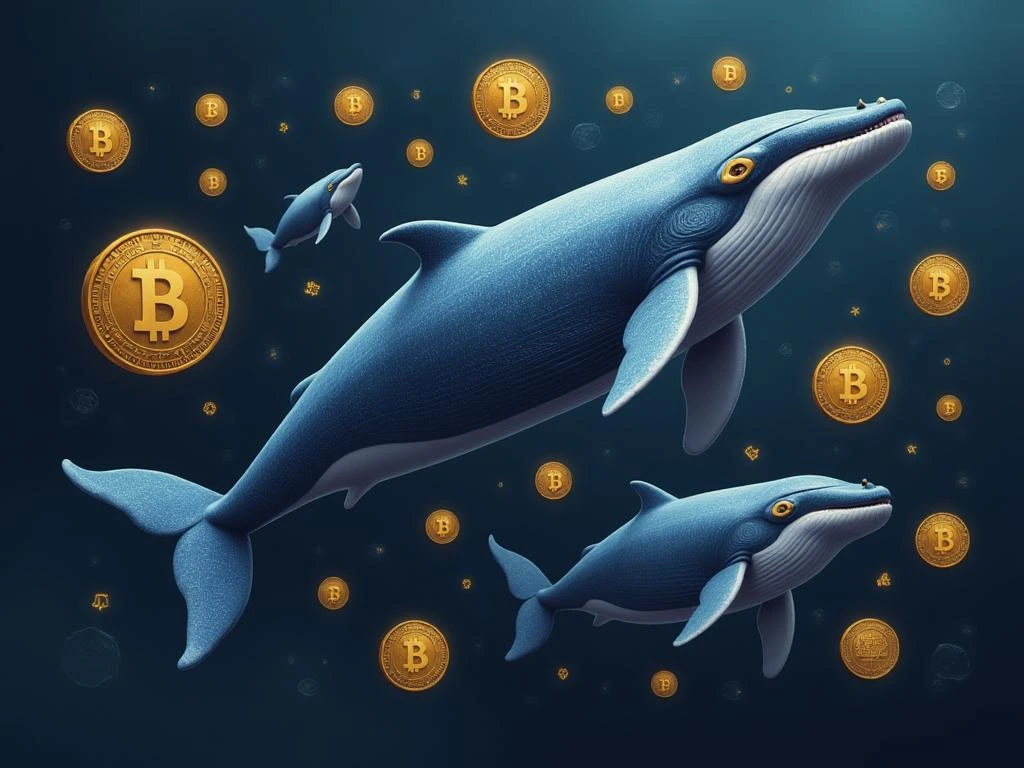
If you’ve ever traded crypto and wondered who actually controls the market, you’re not alone. A growing area of crypto research focuses on wallet concentration — in other words, how much of a token’s supply is sitting in just a few top addresses.
Whale wallets, those addresses holding massive amounts of coins, can make or break price action. With one big transaction, they might trigger a wave of panic-selling or, conversely, hype a rally. That’s why understanding where your chosen cryptocurrency is actually held can save you from heartbreak — or help you spot opportunities.
Recent on-chain data from Santiment, published by PANews, gives a fresh snapshot of this reality for three big names: USD Coin (USDC), Chainlink (LINK), and Shiba Inu (SHIB). And let’s just say the differences are striking.
USD Coin (USDC): A More Balanced Stablecoin
Let’s start with USDC, one of the most widely trusted stablecoins, used across exchanges, DeFi, and cross-border payments. According to Santiment, the top ten wallets control 27% of all USDC in circulation.
On the surface, 27% might look significant, but remember: USDC is a stablecoin. It’s designed to be pegged 1:1 with the U.S. dollar, acting more like a digital dollar than a speculative asset. Its supply is constantly in motion between exchanges, DeFi pools, and institutional traders.
A relatively lower concentration helps maintain that 1:1 peg, since it means no single wallet or institution can suddenly destabilize USDC by dumping a massive chunk on the market. That makes sense if you think about stablecoins’ purpose: stability and liquidity.
👉 Key takeaway? USDC looks fairly healthy and liquid, with concentration among its biggest holders at a reasonable level. For investors who want to park funds in a stable token, that’s reassuring.
Chainlink (LINK): Moderate Whale Presence
Next up, let’s talk about Chainlink, the oracle network powerhouse that feeds external data to blockchains. According to the report, the top ten LINK wallets hold around 32% of total supply.
This is moderately concentrated — a bit higher than USDC — and for good reason. Chainlink is a key infrastructure piece for decentralized finance, and much of its token distribution is aimed at funding partnerships, staking, and node incentives. It’s not surprising that major LINK stakeholders (including node operators, staking pools, and institutional partners) hold large chunks.
But from a retail investor’s standpoint, 32% is still a caution sign. If even two or three of those top wallets offload their LINK positions, they could trigger price swings. That’s why it pays to watch these addresses — many on-chain tracking platforms let you monitor whale activity for free or with a small subscription.
👉 Pro tip: If you invest in LINK, it’s smart to keep an eye on whale moves through tools like Etherscan, Nansen, or Santiment’s own dashboards.
Shiba Inu (SHIB): The Extreme Whale Risk
Here’s where things get spicy: Shiba Inu (SHIB). This token, built around meme culture and viral hype, has an astonishing 62% of its total circulating supply concentrated in just ten wallets.
That’s a huge vulnerability. It means SHIB’s fate is essentially in the hands of a tiny group of holders. If even one of those whales decides to dump a big bag, the shockwaves could crush smaller investors overnight.
Why is SHIB so concentrated? A few reasons:
✅ Large burn addresses (for tokens permanently removed)
✅ Founder and team-controlled wallets
✅ Early investors who hold enormous positions
The meme coin space tends to see bigger concentrations because tokens launch with huge pre-mines or airdrops that a handful of wallets capture early on. SHIB is no exception, and its top addresses remain a looming risk for the average retail trader.
👉 Bottom line on SHIB: If you want to speculate, that’s fine — but go in with your eyes open. If the whales pull the plug, there’s no safety net.
Why Whale Tracking Matters for Your Crypto Portfolio
You might wonder: Why should I care how many whales hold a token?
Simple — concentration means power. If a token is spread among thousands of small holders, it’s harder for any one person to manipulate the price. But if a token is mostly controlled by ten massive wallets, those whales can:
- Coordinate large sells
- Influence price rallies
- Dictate staking or governance decisions
- Control network upgrades
For example, if you’ve been around crypto long enough, you remember cases where a single whale single-handedly caused 30–50% price drops just by moving coins to exchanges.
This is why serious investors track wallet concentration before they enter a trade. It’s not just about charts or technical indicators — on-chain data is like seeing under the hood of the market.
How to Check Whale Concentration Yourself
The good news is you don’t need to be a blockchain genius to check this data. Here’s how:
1️⃣ Visit on-chain explorers (like Etherscan for Ethereum-based tokens)
2️⃣ Search for the token’s contract address
3️⃣ Look under “Holders” or “Token Holders”
4️⃣ View the top 10–100 addresses by balance
5️⃣ Analyze how much % they control
If you want to level up, tools like Santiment, Glassnode, or Nansen can give even deeper insights, including alerts for big wallet movements in real time.
👉 Pro tip: Save your token holder analysis before investing, especially in meme coins, to avoid surprises from whale dumps.
Are Whales Always a Bad Thing?
Not necessarily! Sometimes whales are beneficial, especially for:
✅ providing liquidity
✅ backing up staking networks
✅ funding project development
For example, large LINK holders often include node operators and institutional investors that keep the Chainlink ecosystem running. That’s healthy.
The real danger is if the token’s top wallets are all speculative traders or mysterious addresses with no connection to the project. That’s where you should worry.
Regulation, Transparency, and Whale Behavior
As the crypto market matures, regulators worldwide are paying more attention to on-chain data. Transparency around whale movements could even help build trust with regulators, showing that crypto isn’t a total Wild West.
Exchanges are also improving tracking tools to help small traders see when whales enter or leave the market. This democratizes information — something the traditional finance world often kept secret.
It’s likely that over the next five years, tools to monitor whale activity will become standard for any crypto portfolio. Just like you check earnings reports for stocks, you’ll check top wallet data for your coins.
Lessons for Investors
Let’s sum it all up with some lessons you can use today:
✅ Stablecoins like USDC are generally safer, thanks to their balanced distribution and regulatory oversight
✅ Infrastructure tokens like LINK have moderate concentration — track top holders, but don’t panic
✅ Meme coins like SHIB are highly risky because a few whales can move the price dramatically
If you’re new to crypto, focus on coins with more decentralized supply, stronger fundamentals, and clear use cases. That’s how you reduce the risk of being blindsided by whale sell-offs.
Frequently Asked Questions (FAQs)
1. What is a whale in crypto?
A “whale” is a wallet or individual that holds a massive amount of a cryptocurrency, enough to influence the price.
2. Why do stablecoins have lower concentration?
Stablecoins are used for liquidity and payments, so their supply circulates more broadly among many wallets.
3. Can whales manipulate the market?
Yes. A whale can crash or pump the price with a single big transaction, especially in meme coins or tokens with low liquidity.
4. How can I protect myself from whales?
Research token distribution before investing, and set tight stop-loss levels to protect your portfolio from sudden dumps.
5. Are whales illegal?
No, but their influence can be risky if you don’t track their moves.
Conclusion: Knowledge is Your Best Shield
Data from Santiment is a wake-up call: top wallets do have power, and if you ignore them, you could get wrecked.
In 2025, wallet transparency is as important as technical charts and hype. Before you place your next bet on SHIB, LINK, or USDC, look under the hood:
👉 Who really holds the supply?
👉 What could happen if they sell?
By keeping an eye on whale concentration, you make smarter, calmer decisions — and stay one step ahead of the herd.
